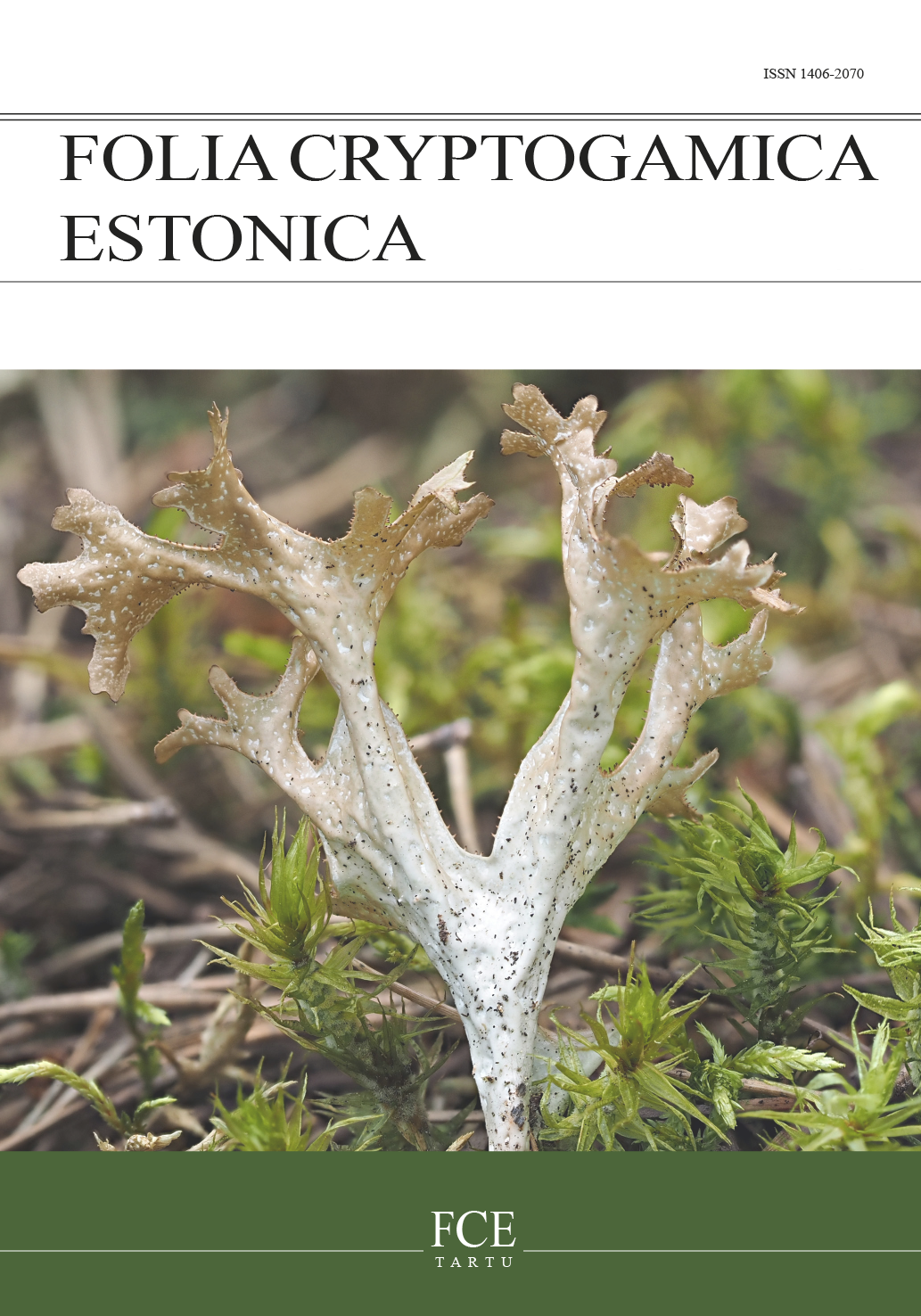Vertical distribution of epiphytic bryophytes depends on phorophyte type; a case study from windthrows in Kampinoski National Park (Central Poland)
DOI:
https://doi.org/10.12697/fce.2020.57.08Keywords:
mosses, liverworts, phorophyte, vertical gradient, heigh zones, Ellenberg indicator valuesAbstract
The vertical distribution of epiphytic bryophytes in European forests are still relatively poorly understood. The aim of the study was to analyse the diversity and vertical zonation of epiphytic mosses and liverworts on selected tree types (Quercus petraea, Betula pendula and Pinus sylvestris) within windthrow areas in the Kampinoski National Park (Central Poland). The investigations were performed in five parts of the trees: the tree base, lower trunk, upper trunk, lower crown, and upper crown. Deciduous trees have more species than pine trees (13 on Quercus and Betula, 8 on Pinus). The type of phorophyte was crucial for the differences in the species composition from the tree base to the upper crown that was observed. The highest richness of bryophytes was recorded on the tree bases, while the lowest was recorded in the upper parts of the crowns. The variability of the habitat conditions in the vertical gradient on the trunk that affected the patterns of the occurrence of species with different ecological preferences was determined using the Ellenberg indicator values. An increase in the value of the light and acidity indicators from the base of the trunk upwards and decreasing tendency in the case of moisture indicator was noted.


